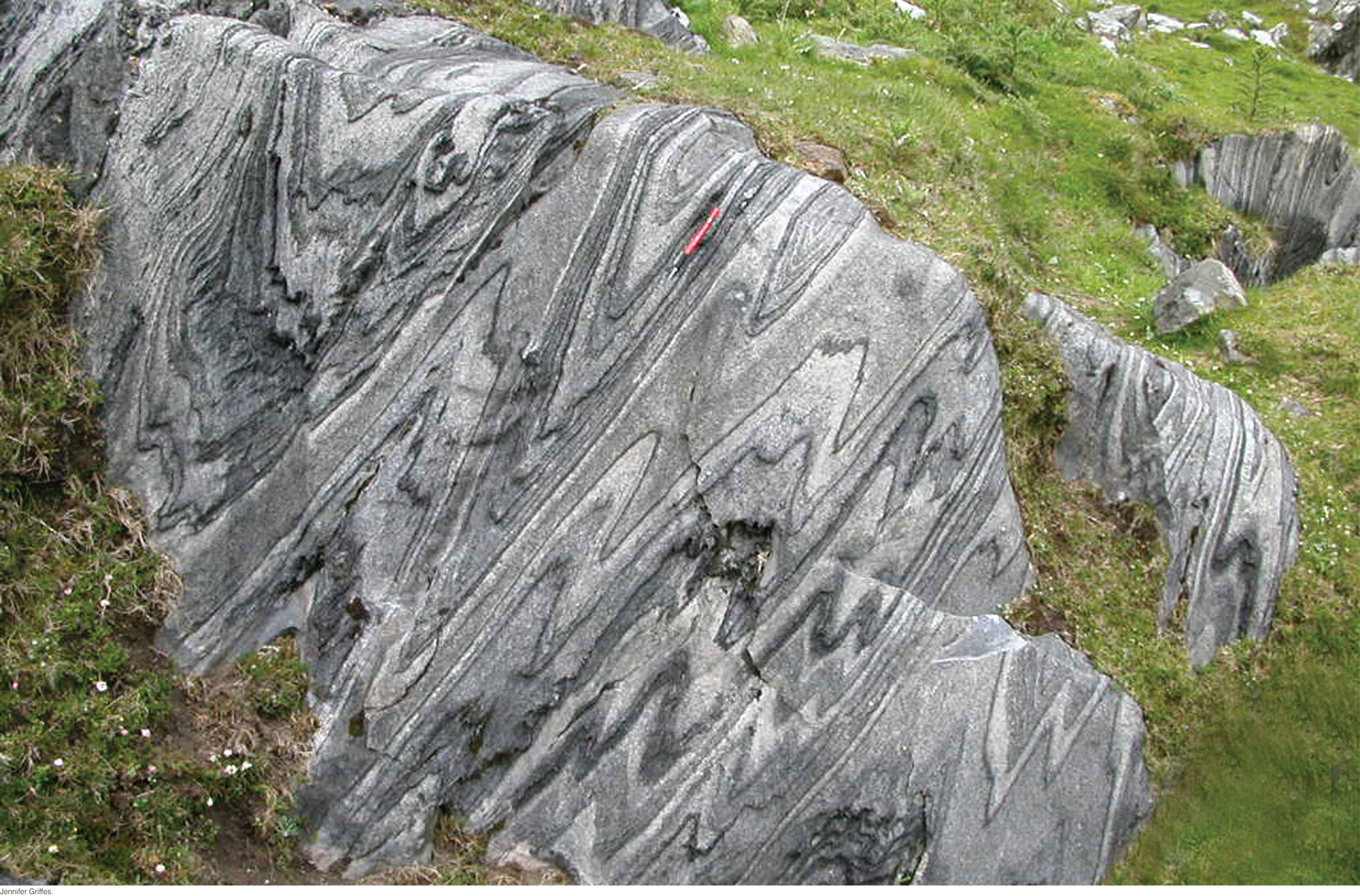148

METAMORPHISM: ALTERATION OF ROCKS BY TEMPERATURE AND PRESSURE
 Causes of Metamorphism
Causes of Metamorphism Types of Metamorphism
Types of Metamorphism Metamorphic Textures
Metamorphic Textures Regional Metamorphism and Metamorphic Grade
Regional Metamorphism and Metamorphic Grade Plate Tectonics and Metamorphism
Plate Tectonics and Metamorphism
149
DURING THE ROCK CYCLE, rocks may be subjected to temperatures and pressures great enough to cause changes in their mineralogy, texture, or chemical composition. We are all familiar with some of the ways in which heat and pressure can transform materials. Cooking batter in a waffle iron not only heats up the batter but also puts pressure on it, transforming it into a rigid solid. In similar ways, rocks are transformed as they encounter high temperatures and pressures deep in Earth’s crust.
Tens of kilometers below the surface, temperatures and pressures are high enough to cause chemical reactions and recrystallization that transform rock without being high enough to melt it. Increases in temperature and pressure and changes in the chemical environment can alter the mineral composition and crystalline texture of igneous and sedimentary rock, even though it remains solid all the while. The result is the third large class of rocks: metamorphic rocks, which have undergone changes in mineralogy, texture, chemical composition, or all three.
It is important to understand that most metamorphism is a dynamic process, not a static event. Earth’s internal heat engine drives the plate tectonic processes that push rocks formed at Earth’s surface down to great depths, thereby subjecting them to high pressures as well as high temperatures. But the transformed rocks return to Earth’s surface eventually, and that process is largely powered by weathering and erosion—in other words, by the climate system.
150
This chapter examines the causes of metamorphism, the types of metamorphism that take place in certain geologic settings, and the origins of the various textures that characterize metamorphic rocks. It shows how geologists use characteristics of metamorphic rocks to understand how and where they were transformed, and it looks at what their journey through the rock cycle tells us about the processes that shape Earth’s crust.